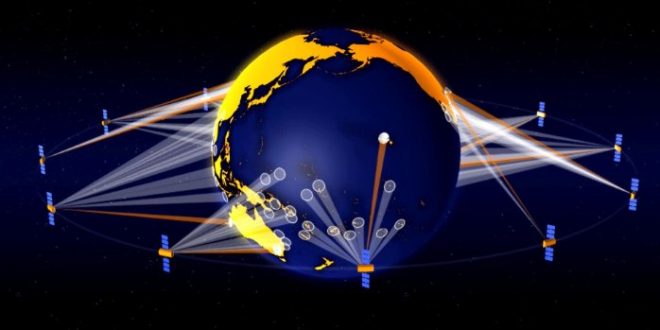China made history by successfully shooting a hack-proof quantum signal from space that smashed previous records on the transmission of such entangled particles. Beijing used its new quantum communication satellite, Micus, which it launched last August to transmit the quantum signal to Earth over an unprecedented 1,200 Kms.
Micius forms part of a wider Quantum Experiments at Space Scale (QESS) study. QUESS is a proof-of-concept mission designed to facilitate quantum optics experiments over long distances to allow the development of quantum encryption and quantum teleportation technology. The communications system uses a process called entanglement to allow for communication that is safe against eavesdropping or decryption by a third party.
This is achieved by optical technology which utilizes quantum computing; Micius uses pairs of entangled photons sent with random polarization. The idea is that two parties who wish to communicate are sent one half of the pair.
Security is built-in due to the concept of ‘quantum uncertainty’. This is the property that allows those engaged in secret communications to know if they are being spied on: the eavesdropper’s efforts would mess up the connection. The idea was first put forward by German physicist Werner Heisenberg in 1927.
Micius contains delicate optical equipment and data is transmitted to two mountain-top Earth bases which are 1,203 kilometers apart (in China and Austria). In trails reported in June 2017 pairs of photons to facilitate the communication have been beamed to the two sites, allowing for secure communication to take place.
Interviewed by New Scientist, Anton Zeilinger, an expert on quantum physics at the University of Vienna in Austria, said: “This is the first step towards worldwide secure quantum communications, and maybe even a quantum Internet.”
In addition, lead researcher Jian-Wei Pan, who is based in Hefei in China’s Anhui Province, told the BBC: “I think we have started a worldwide quantum space race.”
The hardest part of the communications feat was ensuring that the entangled photons would not be destroyed while traveling through about 10 kilometers of lower atmosphere. This required focusing the photons through special receivers, with the ground stations using adaptive optics.
The satellite continues to circle the Earth, transmitting information. The communications success has been published in the journal Science, under the title “Satellite-based entanglement distribution over 1200 kilometers.”
Agencies/Canadajournal
 Canada Journal – News of the World Articles and videos to bring you the biggest Canadian news stories from across the country every day
Canada Journal – News of the World Articles and videos to bring you the biggest Canadian news stories from across the country every day



